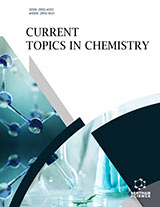Abstract
Crystal structures of small ligands are a source of valuable structural information helpful in the process of drug design (pharmacophore model elaborations, 3D QSAR, docking, and de novo design). In particular, small molecules crystallography can approach ligand-receptor binding by providing unique structural features both about the conformation (internal geometry) of the ligand(s) and about the intermolecular interaction potentially occurring within the active site of a target (enzyme/receptor). Small molecule crystal structure databases can also be used in three-dimensional search to identify new drug candidates. Future development in small molecule crystallography (e.g. powder diffraction) should also provide original solutions to complex problems related to polymorphism.
About this chapter
Cite this chapter as:
Johan Wouters, Frédéric Ooms ;Applications of Small Molecule Crystallography and the Cambridge Structural Database in Drug Design, Frontiers in Medicinal Chemistry (2004) 1: 595. https://doi.org/10.2174/978160805204210401010595
| DOI https://doi.org/10.2174/978160805204210401010595 |
Print ISSN 1567-2042 |
| Publisher Name Bentham Science Publisher |
Online ISSN 1875-5763 |






















